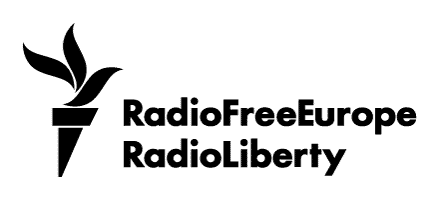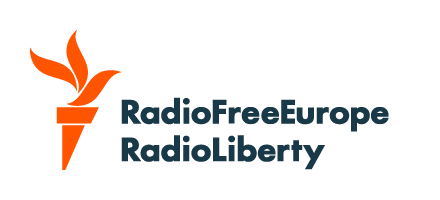Welcome to Wider Europe, RFE/RL's newsletter focusing on the key issues concerning the European Union, NATO, and other institutions and their relationships with the Western Balkans and Europe's Eastern neighborhoods.
I'm RFE/RL Europe Editor Rikard Jozwiak, and this week I'm drilling down on two issues: A preview of this week’s EU summit and Brussels' plan to train Ukrainian soldiers on their own soil.
Briefing #1: An Agreement On Russia Sanctions But Little Else As EU Leaders Gather In Brussels
What You Need To Know: EU leaders will gather in Brussels on October 23 for their regular fall summit, with Ukrainian President Volodymyr Zelenskyy likely to attend. But apart from potentially agreeing in principle on more sanctions on Russia, they are unlikely to make much progress on finding more money for Kyiv or advancing the country’s EU membership prospects. Instead, the big talking point might be a meeting few of them will attend -- the impending Budapest summitbetween the US and Russian presidents. Expect the host, Hungarian Prime Minister Viktor Orban, who has often held views contrary to the rest of the bloc on Ukraine and Russia, to give a short update at the summit about the preparation of the meeting in his capital.
Deep Background: On sanctions it is perhaps indicative that the draft EU summit conclusions, seen by RFE/RL, have two bracketed options on the latest raft of punitive measures against the Kremlin: "the European Council [welcomes the][calls for a swift] adoption of the 19th package of sanctions." The sanctions proposal, which was presented by the European Commission in mid-September, includes the complete ban on Russian liquefied natural gas (LNG) imports by the start of 2027 and also targets the Russian shadow fleet and banks, including some in Central Asian countries. While all 27 EU member states are in agreement with the thrust of the general sanctions, Slovakia has still not given its green light. Austria had also expressed reservations as it wanted to remove some Russian oligarchs that have been on the blacklist for years in order to help Raiffeisen Bank, an Austrian lender, with legal issues in Russia. Eventually, it folder, as all other EU member states were against Vienna's proposal. It will, however, be harder to convince Slovakia regarding its objections, as its prime minister, Robert Fico, wants to have a discussion about the bloc's decision to ban the sale of all new petrol and diesel cars by 2035. This has absolutely nothing to do with the latest package of sanctions, but, in Brussels, various issues tend to get tangled up and are part of the inevitable horse-trading.
The draft summit conclusions on the Green Deal, the EU’s ambitious goal to emit zero greenhouse gases by 2050, are already now written to soften the blow for member states with a considerable automotive sector -- like Slovakia. The conclusions note that the "European Council recalls the need to intensify collective efforts to ensure Europe’s industrial renewal and decarbonization in a technologically neutral manner. It underlines in this context that particular attention should be paid to traditional industries, notably the automotive, shipping, aviation, and energy-intensive industries, such as steel and metals and chemicals, so that they remain resilient and competitive in a global market." What is likely to happen is that Bratislava will be able to extract more reassurances going forward, including a review of the 2035 combustion engine ban, and that Slovakia will eventually wave through the latest package of Russia sanctions.
Drilling Down:
- On the possibility of Ukraine joining the EU, there will be little progress given that Hungary has long made clear that it will veto any move to allow Ukraine (and by extension Moldova) to join -- a stance that is unlikely to change before parliamentary elections in the Central European country in April 2026.
- But other countries are moving forward with the preparatory work, and there are hints in the proposed EU summit text that things could proceed quickly if Budapest gives its green light.
- In previous summits, the communique mentioned the opening of one out of six negotiation clusters for Ukraine. Now, there is a mention of two more clusters -- and the same language is used for Moldova. In essence, that could mean that if accession talks got going, they could do so in a wide array of policy fields immediately.
- But perhaps the most pertinent discussion will be on the future financing of Ukraine, especially as the United States might spend less in the future. Kyiv's needs for this year are already covered but, from 2026 onwards, things are less clear.
- The latest European Commission proposal is to leverage the roughly 174 billion euros ($203 billion) of frozen Russian assets in the EU into a “reparation loan” for Ukraine. Most of this money is being held in Euroclear, a Belgium-based financial market infrastructure group. Belgium has been lukewarm about the proposal so far, even though it hasn’t blocked it entirely. Officials from Belgium want more legal clarity, and the country is also keen that other EU member states, as well as possibly G7 countries, share the potential future financial burden.
- Regarding the "reparation loan," France also wants Ukraine to be bound to spend some of the money on defense equipment made in the EU.
- It is still expected that the European Commission, after the October 23 summit, will flesh out a proper legal proposal on the loan and that is something that can be agreed when the leaders meet again in December. Crucially, the European Central Bank, which initially wasn’t happy with the proposal, is now playing a constructive role.
- Another positive sign, in terms of getting the deal done, is that most EU member states back it, with Germany already on board. Hungary, Slovakia, and the Czech Republic, under a new government, might hesitate but there's unlikely to be many more dropping out.
- And if non-EU countries, such as the United Kingdom, Canada, and Japan join the effort, the reparations loan proposal could very well fly in the next couple of months.
Briefing #2: EU Edging Closer To Training Missions In Ukraine
What You Need To Know: The European Union is edging closer to training Ukrainian troops inside the country itself and to expanding other forms of support -- including border monitoring, assistance for war veterans, and boosting Ukraine’s cybersecurity. Brussels is also considering establishing forward positions in Ukraine in case of a future cease-fire. That’s according to strategic reviews seen by RFE/RL of the EU’s two missions dealing with Ukraine: the EU Advisory Mission (EUAM), which focuses on strengthening the civilian security sector; and the EU Military Assistance Mission (EUMAM), which has so far trained 80,000 Ukrainian soldiers on EU soil. The reviews come as the EU is still working out what security guarantees it can offer Kyiv if the war stops. The documents also note, however, that Russia "maintains its objective to redraw the European security order" and that Moscow’s "military aggression and approach to the diplomatic process demonstrate that its ultimate goal to subjugate Ukraine has not changed."
Deep Background: Deploying troops to Ukraine -- regarded by many as the ultimate security guarantee -- remains a national decision, but EU training missions allow Brussels to provide wide-ranging support to Kyiv. Changing the mandate of both EUMAM and EUAM requires unanimity, however, and this is what both reviews are actually pushing for. EUMAM, which was launched in late 2022 as a direct response to Russia’s full-scale invasion, has been one of the EU’s success stories when it comes to supporting Ukraine. Fifteen full combat brigades have been trained in 18 EU member states offering 1,750 different types of training modules, including practice with F-16 and Mirage jets -- all for a relatively modest budget of 360 million euros ($420 million). Kyiv, however, has repeatedly called for some of the training to take place on Ukrainian soil. It also aims to increase the number of trained soldiers from 4,000 to 20,000 per month. The strategic review of EUMAM notes that three training centers have already been established in the western part of Ukraine, but that none of them are fully operational due to a lack of adequate infrastructure and qualified external trainers.
Drilling Down:
- The text points out several drawbacks to the EU mission’s lack of a presence on the ground in Ukraine, such as the logistical burden and the danger of Ukrainian troops having to travel far from the front line for training.
- It also notes that “training on EU soil, in a peacetime environment, hampers the use of UAV (unmanned aerial vehicle) systems and electronic warfare assets, which are utilized extensively in this conflict.” It also states that there is a risk of non-EU troops moving in to provide training if Brussels is reluctant.
- Yet, the paper acknowledges that moving some or all parts of EUMAM to Ukraine would “imply that a cease-fire or any form of truce should be in place.” It also says that the deployment should be “coordinated with a US contribution or backstop to security guarantees.”
- To allow a quick move into Ukraine -- effectively a change in the mission’s mandate -- the strategic review proposes a two-step process: first, to agree on the new strategic direction and revise the mission plan now; and second, to vote on and approve the required amendments once conditions on the ground permit.
- Whereas EUMAM is a relatively new mission and not present inside Ukraine, EUAM has been based in several Ukrainian cities since just after the 2014 Revolution of Dignity, which ushered pro-European forces into power in Kyiv after the ouster of pro-Russian President Viktor Yanukovych. And it has remained in place despite the full-scale invasion, even though it had to leave its offices in Kharkiv and Mariupol due to the war.
- Around 400 mission members are currently working alongside civil security sectors, such as the police, the national guard, the state prosecutor’s office, and the state border guards.
- The main goal is still to work on reforming these institutions to match European Union standards when it comes to civilian oversight and governance, in order to prepare the country for eventual EU membership.
- But the strategic review of the EUAM also suggests new areas for the mission, such as supporting Ukraine’s ability to monitor its borders with Russia and Belarus, as well as being present on any potential future contact lines in the event of a cease-fire.
- Other new ideas based on Kyiv’s needs and requests include assistance on cybersecurity and the protection of critical infrastructure. According to the document, nearly 600 people linked to Russia were apprehended for subversive activities in Ukraine over the past year.
- Brussels has also indicated that it is ready to help with the reintegration of war veterans across the civilian security and civil protection sectors.
Looking Ahead
There is a full European Parliament plenary in Strasbourg this week and there should be lots of Belarus-related news coming out from the chamber. Opposition leaders Svyatlana Tsikhanouskaya and Syarhey Tsikhanouski will address the lawmakers, who will also debate and vote on a resolution about the fifth anniversary of the fraudulent presidential election in the country. On top of that, it's expected that Andrzej Poczobut, an imprisoned Polish-Belarusian journalist, will win the Sakharov Prize, one of the top human rights awards that the European Parliament gives annually.
That's all for this week!
Feel free to reach out to me on any of these issues on X @RikardJozwiak, or on e-mail at jozwiakr@rferl.org.
Until next time,
Rikard Jozwiak
If you enjoyed this briefing and don't want to miss the next edition subscribe here.








